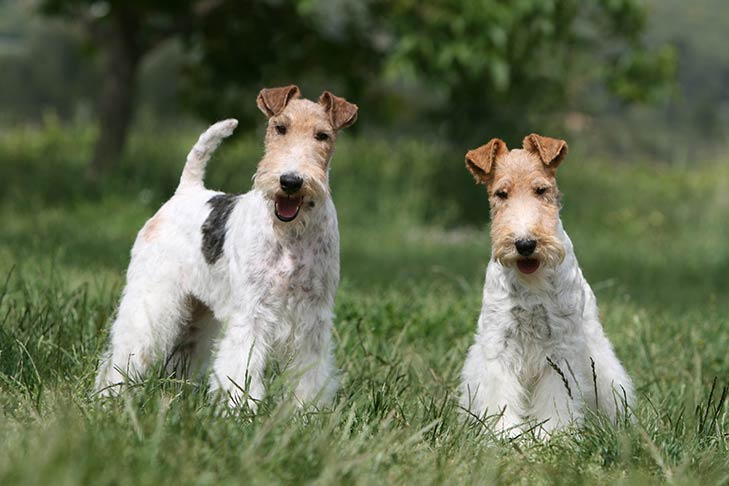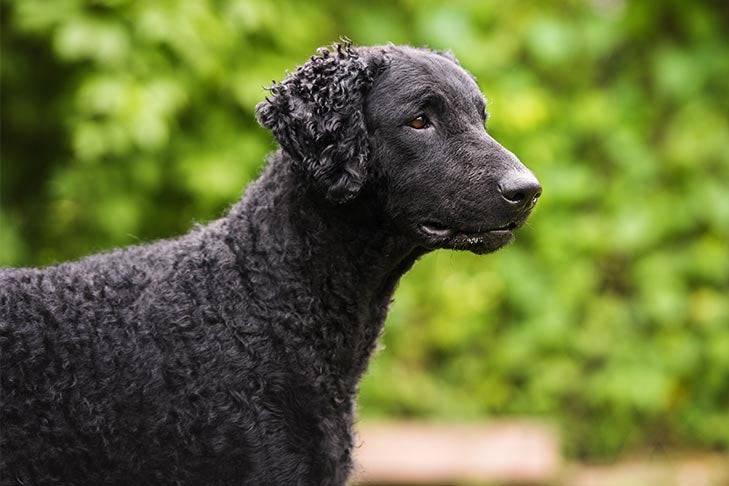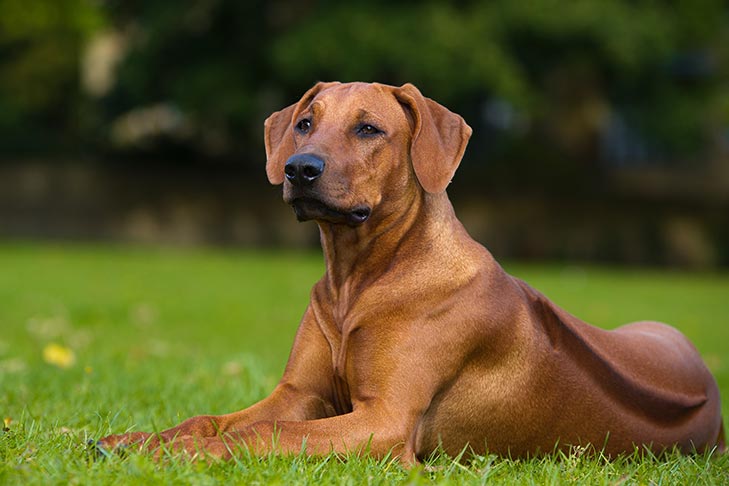
What makes a Poodle‘s coat different from a Greyhound‘s? A Wire Fox Terrier‘s different from a Yorkshire Terrier‘s? Your dog’s coat different from a dog you see being walked in your neighborhood? Dog coats seem to come in an endless variety, but all dog coat types are actually caused by two variants in just three genes. So what are these genes, and how do they work together to create so many varied coat types.

The Genetics of Different Dog Coats
In a study partially funded by the AKC Canine Health Foundation, three genes were found to cause variation in dog coats. These genes are FGF5, KRT71, and RSPO2, and they all determine different dog coat types. FGF5 determines long versus short hair, KRT71 determines straight versus curly hair, and RSPO2 determines whether a dog is furnished versus smooth-faced. “Furnishings,” or long hair on the face, include a long beard and eyebrows, seen often in wire-haired breeds. Non-furnished on the other hand doesn’t have as defined or long hairs and eyebrows, which is where the “smooth-faced” variant gets its name.
The National Human Genome Research Institute (NHGRI), which is part of the National Institutes of Health (NIH), stresses that just three mutations in various combinations explain the coat types of 95% of dogs. While we tend to think of evolution as occurring in tiny steps, these huge differences in coat types due to just three mutations demonstrate that at least in the dog, small genetic changes can make big physical changes. These major physical differences caused by just a few genes provides a pathway for rapid evolution in domestic dogs, which helps explain in part why there are so many dog breeds.
How These Coat Types Come To Be
In order to determine how these genes shake out into different coat types, the NHGRI looked at breeds with varied coat types. Working with these breeds allowed researchers to spot the genetic differences that created these different coat types across the most consistent genetic background possible: purebred dogs. For example, Dachshunds come in smooth, wire, and long coats. The wire coats, unlike the others, have furnishings. Portuguese Water Dogs can have coats varying from curly to wavy.

Dogs with different coat types were compared also within the breeds, looking at consistent genetic differences that created these variations. The NHGRI looked at almost 700 dogs from 100 breeds, and validated their findings with each.
What they found was surprisingly simple: dog coat types basically vary along three dimensions—short versus long (FGF5), straight versus curly (KRT71), and furnished (or wire) versus smooth-faced (RSPO2).
Short vs. Long Coats
Wolves are ancestors of dogs, and their coat length gene is for short coats. This is called an “ancestral trait.” This trait distinction is under the FGF5 (fibroblast growth factor-5) gene. Coat variants occur at what is called the “L-Locus,” which is where it’s determined whether a dog will have a short or long coat. So how does this actually work?
If a dog has one or two copies of the ancestral dominant L variant, they will have short coats. This means Ll and LL traits will create short coats, whereas ll, two copies of the recessive l variant, is how dogs get long coats.
For some breeds, this gets a bit more complicated. The original research, published in 2009, has expanded to account for the fact that the above dominant and recessive L-locus variants don’t work for every long and short-coat breed. In some breeds, it was later found that different variants at the same L-locus could also determine coat length in certain breeds. These variants were called L2, L3, L4, and L5, and each affect the coat length of different breeds.

L2, for example, affects coat length in Akitas, Samoyeds, and Siberian Huskies. The Eurasier‘s coat length is affected by L2, L3, and L4, whereas the Afghan Hound‘s coat length is determined by L4 and L5. Not all breeds’ L-locus variants are completely understood yet. The length of long hair can also vary greatly.
Furnished versus Smooth-Faced Coats
At the RSPO2 locus, smooth-faced is the ancestral variant. The opposite, called “furnished,” refers to the long hair or beard on a dog’s face. Facial furnishings can be present with long-coated dogs, but don’t have to be. They are always present on wire-coated dogs, and furnishings are the dominant trait between the two.
The RSPO2 (R-respondin-2) locus is also called the Wired or W-locus. Dogs with one or two copies of the variant W have furnishings. This would look like Ww or WW. On the other hand, dogs with two copies of the w variant (ww) are smooth-faced.
Straight vs. Curly Coats
A straight coat is the ancestral trait, but many breeds have coats that are curled to some extent. What causes these curly coats? Variants at the KRT71 (Keratine-71) locus determine the texture. The KRT71, or “Cu-locus” gene is responsible for dog’s curly, wavy, or straight coats. Unlike long versus short coats and furnished versus smooth-faced coats, there is more variation in determining coat texture at the Cu-locus. Dogs with two copies of the Cu^C variant have curly hair (Cu^C Cu^C). Dogs with straight hair have two copies of the Cu variant (Cu^c Cu^c). In the middle, dogs with one copy of each variant (Cu^C/Cu^c) have wavy hair.

Researchers have since found a second variant at the same locus that affects curliness. This variant, called C^C2, is responsible for the curly coat in Curly-Coated Retrievers. It is also found, along with the original C^C variant, in some Chesapeake Bay Retrievers, Lagotti Romagnoli, Mudis, Spanish Water Dogs, and Poodles.
The Gene Combinations That Make Coat Types
Different combinations of the above variants at the L-locus, W-locus, and Cu-locus explain coat types in most dog breeds.
Combination A: Ancestral type for all loci produces dogs with short, straight hair and no facial furnishings, such as the Labrador Retriever and French Bulldog.
Combination B: Ancestral type for all loci (except RSPO2) produces dogs with wire coats, such as the Irish Wolfhound and Australian Terrier. Otherwise, they have the ancestral type for smooth face and short hair.
Combination C: Ancestral variant at all loci (except RSPO2 and KRT71) produces dogs with wire and curly hair, such as the Airedale Terrier and Belgian Laekenois.
Combination D: Ancestral variant at all loci (except FGF5) produces dogs with long, feathered coats and smooth faces, such as the Irish Setter and Cocker Spaniel.
Combination E: Ancestral variant at all loci (except FGF5 and RSPO2) produces dogs with long hair and facial furnishings, such as the Havanese and Bearded Collie.
Combination F: Ancestral variant at all loci (except FGF5 and KRT71) produces dogs with curly hair and no facial furnishings, such as the Irish Water Spaniel.
Combination G: No ancestral variants at FGF5, RSPO2, or KRT71 produces dogs with curly hair and facial furnishings, such as the Bichon Frise.
Interestingly, certain combinations never seem to appear. Dogs with very short hair cannot also have curly hair, as the hair is too short to curl. But perhaps more interesting is that dogs with this genetic combination (containing the FGF5 short variant and the KRT71 curly variant) have never been seen in any of the dogs studied.
Coat Variations Based on Breeds
Besides these major coat types, a few other coat variations are restricted to just a few breeds.
Hairlessness

The hairlessness in most hairless breeds such as the Chinese Crested, Xoloitzcuintli, and Peruvian Inca Orchid is the result of an ancient genetic mutation that probably spread to these different breeds. Hairlessness in these breeds is inherited as a dominant trait, but a homozygous lethal one. This means that dogs with one copy of the mutation are hairless, dogs with no copies are coated, and dogs with two copies of the mutation die as embryos. This is why it’s impossible to breed a line of only hairless dogs in these breeds, as every hairless dog must have a copy of both variants.
The American Hairless Terrier is hairless due to a totally different mutation of a different gene. In these dogs, hairlessness is inherited as a recessive gene, meaning two copies of the hairless variant must be present for the dog to be hairless. In addition, dogs with two copies are perfectly healthy, nor do they have the dental abnormalities that go along with the hairless trait in other breeds.
Shedding
The RSPO2 gene, responsible for a wire coat and furnishings, also appears to be related to shedding. Breeds that rarely shed, such as the Poodle, almost always have two copies of the RSPO2 variant, which is also responsible for furnishings and a wire coat. On the other hand, heavy shedders, and breeds with a heavy undercoat, tend to have two copies of the ancestral variation.
Ridge
Several breeds, most notably the Rhodesian Ridgeback and Thai Ridgeback, have an unusual coat growth pattern in which a line of hair along the spine grows backward. The ridge is the result of a single dominant gene designated as R. This gene impacts more than just the way their coat grows. Ridged dogs are more prone to a defect called dermoid sinus, where there may be an opening in the skin that can even reach the membrane covering the spinal cord. Dogs with two copies of the R variant are more likely to have this defect than dogs with just one copy.

As in the case of the ridge (R), coat type genetics can impact more than just the way they look. Inheriting certain coat types and studying the genetics behind them can help us better understand canine and human health. For example, the RSPO2 gene is involved in hair follicle development, and also in the development of hair follicle tumors in a number of species, including dogs and humans. In fact, canine trichoblastoma, a cancer of the bulb of the hair follicle, occurs most frequently in breeds with furnishings. Knowing about breed coat genetics doesn’t just help dogs, it can help people too.

